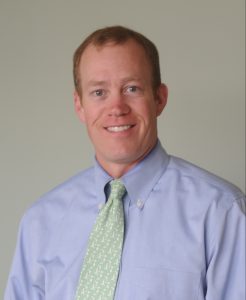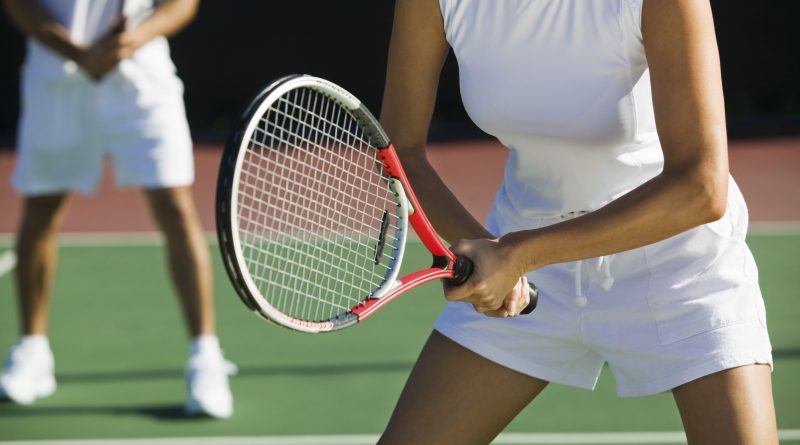Healing Tendons: A New Approah
Got tennis or golfer’s elbow? There’s a new approach to curing tendonitis that uses your own blood to heal. University of Vermont’s Dr. David Lisle explains.
As an athlete, there may come a time when you suffer from chronic pain due to tendon injuries, such as tennis elbow or jumper’s knee.
Tendon injuries can be very painful and difficult to heal—even with rest, medications and physical therapy. Standard treatment can include medication, physical therapy and sometimes even surgery.
But there’s another option, a relatively new approach that involves injecting your own blood into the injury to stimulate healing. The University of Vermont Medical Center is one of the only centers in the region that offers platelet-rich plasma therapy (PRP).
Dr. David Lisle, M.D., an orthopedic sports medicine physician at the UVM Medical Center and an Assistant Professor of Orthopaedics at the UVM Larner College of Medicine, explains.

Vermont Sports: How do you get tendonitis in the first place, and why is it so painful and hard to heal?
DL: Tendons connect our muscles to bones, via many thousands of threads. Think of uncooked spaghetti, if you will: tendons have a very organized, linear pattern.
They also typically have relatively poor blood supply and they are subject to different stresses. For instance, the rotator cuff sees some tensile or stretching type stress as well as compressive forces. The Achilles mostly sees some tensile stress, as well. Each tendon has its own load that can be subject to injury over time.
With tendinosis, over time, injuries create small, microscopic tears in that tendon and the body tries to heal those. With repeated, back-and-forth tearing and healing, the body shuts down the attempt to heal and often that tendon becomes stagnant in a painful state.
VS: What’s the theory behind this PRP process?
DL: The whole idea of re-injecting platelets in an area is get the body to recognize an injury and jumpstart the inflammation process that begins the healing.
When we do the procedure, we create a small injury to let the body know that tendon needs to be healed. The platelets are just a more robust method to allow the body to recognize an injury and heal it. Platelets are very pro-inflammatory and inflammation is the first stage of healing.
VS: Just what are platelets?
DL: Platelets are in our blood and we know them most commonly as a blood clotter— when we cut ourselves, they clot the blood. They also have a very powerful ability to signal to other cells and start the healing process when we damage our tissues.
VS: When people give blood, they just take the platelets out, right?
DL: Most of the time when you donate blood, they do leave the platelets in. Those are primarily blood donations to harvest red blood cells. When we do PRP, we’re actually trying to remove those red blood cells from the preparation before treatment.
VS: How do you do that?
DL: It’s as simple as a blood draw at our office, and much less blood is taken than what you would have if you’re donating blood. It’s usually anywhere from 30 to 60 cc’s. Then we take that blood and we put it in a centrifuge and spin it down, remove the red blood cells and just take the platelets.
VS: Then it’s a process of reintroducing those to the area where there’s trouble?
DL: Right. Depending on where the patient may have trouble we use special imaging modality with ultrasound. Musculoskeletal ultrasound helps us see the damaged tissue, and we just re-inject the platelets into the area with a needle. Often, we’ll create a small injury to that area, it’s a controlled injury to help stimulate healing while we inject the platelets.
VS: So the “intentional” injury helps draw healing elements to that area. Does it hurt and how long does it take to heal?
DL: We use some anesthetic to help numb the area. I liken it to having a tooth pulled. Initially, with the numbing medicine, it feels pretty good and when that wears o , patients do feel it a bit. It’s like getting a bee sting, but the platelets activate pretty much immediately and they begin that healing process. That being said, tendons are very slow movers when they heal. I’m very careful to let patients know that this is not a quick fix. The PRP injection is just the beginning of the process and it can be six weeks to even three months before the tendon is close to its normal state.
VS: How well does it work?
DL: The literature shows that most patients respond—I think the percentages out there are somewhere between 66 and 75 percent. In my experience, that’s about right. But not everybody responds to PRP, and we’re not entirely sure why. Some patients aren’t able to rest after the procedure, which slows the process. Also, if they have more severe symptoms coming in, healing is harder. I’d say about three fourths will respond.
VS: Do certain tendon injuries respond better?
DL: Each tendon has its own challenges. The most common one might be the lateral epicondyle, which is the tennis elbow, the lateral part of the elbow, and the medial epicondyle also called golfer’s elbow. Those seem to respond pretty well. I’d say the Achilles tendon and the rotator cu tendon respond the least and are on the lower side of the percentages for healing.
VS: How long do you need to be quiet?
DL: After the procedure, we like to immobilize the joint for 48 hours. If we can get a patient to take a week or even two weeks o of any heavy manual labor, that’s very helpful. Sometimes it’s just not possible. Some folks need to go back to work after three or four days. After the procedure, I am careful to give them a note for work. They either get a sling or a knee immobilizer or a walking boot to keep that joint shut down for a few days. They also get a physical therapy referral, which starts at the two week mark, and that’s extremely important for the whole process.
VS: Who are the best candidates?
DL: Anybody with tendinosis is a potential candidate. We do, obviously, have a visit to discuss the procedure and also get a sense of how severe the tendinosis is. One thing
to consider, too, is that most insurances do not cover PRP except for Workers Compensation. One of the barriers, unfortunately, is cost. But we have worked hard to keep the cost of PRP down to help provide it for as many patients as possible.
VS: Are insurance companies coming around on that?
DL: At the moment, it’s still listed as an experimental procedure and as more and more literature shows a positive result, I think it will shift to a covered procedure.
VS: How long has PRP been around?
DL: It started in ’06 at Stanford University. The initial studies were only on the elbow and the studies were so positive that other scientists started looking at platelets a little more carefully. A lot of the studies on tendon repair are done in Scandinavia and a lot of those articles and experiments are extremely positive. It’s been around for over 10 years now and taken hold. I would say that almost everywhere in the country, there are folks using platelets to heal tendons.
VS: Can you use PRP for other injuries?
DL: I do get asked to do PRP injections for injuries in places that have no studies or no literature to base that procedure on. For instance, most recently somebody asked to have PRP in the AC joint, the acromioclavicular joint, a smaller joint on the top of the shoulder. There really is no evidence for PRP to work in that region, so I wasn’t really comfortable taking that leap.
VS: For the folks for whom it doesn’t work, what happens then?
DL: It depends. If there’s a partial response and we’re just not quite where we want to be, sometimes we’ll try a second PRP. If we had absolutely no response to the platelets, then in certain instances, we do look into a surgical correction. But we do know that the surgery is for tendinopathies or for tendinosis is not 100 percent successful either. That’s why we like to do the non- invasive or minimally invasive procedures first.

